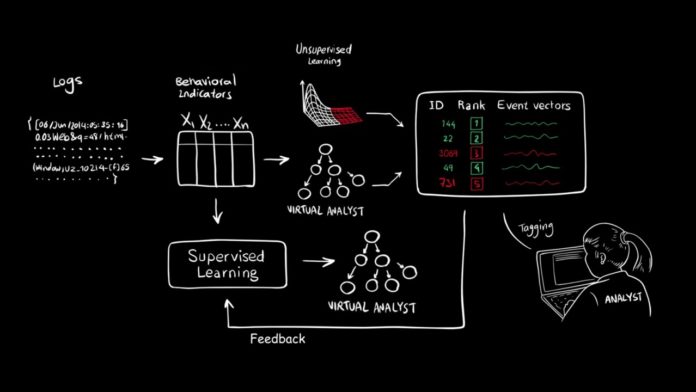Isn’t it cool if we could predict cyberattacks before it happens? Predicting cyberattacks before it happens can help to prevent them.
A Scientist team at the Massachusetts Institute of Technology has developed an Artificial Intelligence system that can detect and stop almost 85% of cyber attacks with a bit of human help. This Advanced intelligent system is known as AI2.
Researchers from MIT’s Computer Science and Artificial Intelligence Laboratory (CSAIL) and the machine-learning startup ParrernEx have demonstrated an artificial intelligence platform known as AI2. They found AI2 predicts cyber-attacks significantly better than the existing system. The system was tested on 3.6 billion pieces of data known as “log lines,” which were generated by millions of users over three months.
To predict attacks, AI2 scans through the data and detects suspicious activity. It detects suspicious activity by clustering the data into meaningful patterns using unsupervised machine learning. This collected suspicious activities, then analyzed by human analysts who confirm which activities are actual cyber-attacks. Human feedback is incorporated into AI2 so that it can get better at analyzing data in the future.
Research scientist Veeramachaneni, who developed AI2, said. “It continuously generates new models that it can refine in as little as a few hours, meaning it can improve its detection rates significantly and rapidly.”
“The more attacks the system detects, the more analyst feedback it receives, which, in turn, improves the accuracy of future predictions,” Veeramachaneni says. “That human-machine interaction creates a beautiful, cascading effect.”
Veeramachaneni presented a paper about the system at last week’s IEEE International Conference on Big Data Security in New York City.
Nitesh Chawla, the Frank M. Freimann Professor of Computer Science at the University of Notre Dame, has said, “This paper brings together the strengths of analyst intuition and machine learning, and ultimately drives down both false positives and false negatives.”
This research has the potential to overcome the attacks such as service abuse, account takeover, and fraud.
